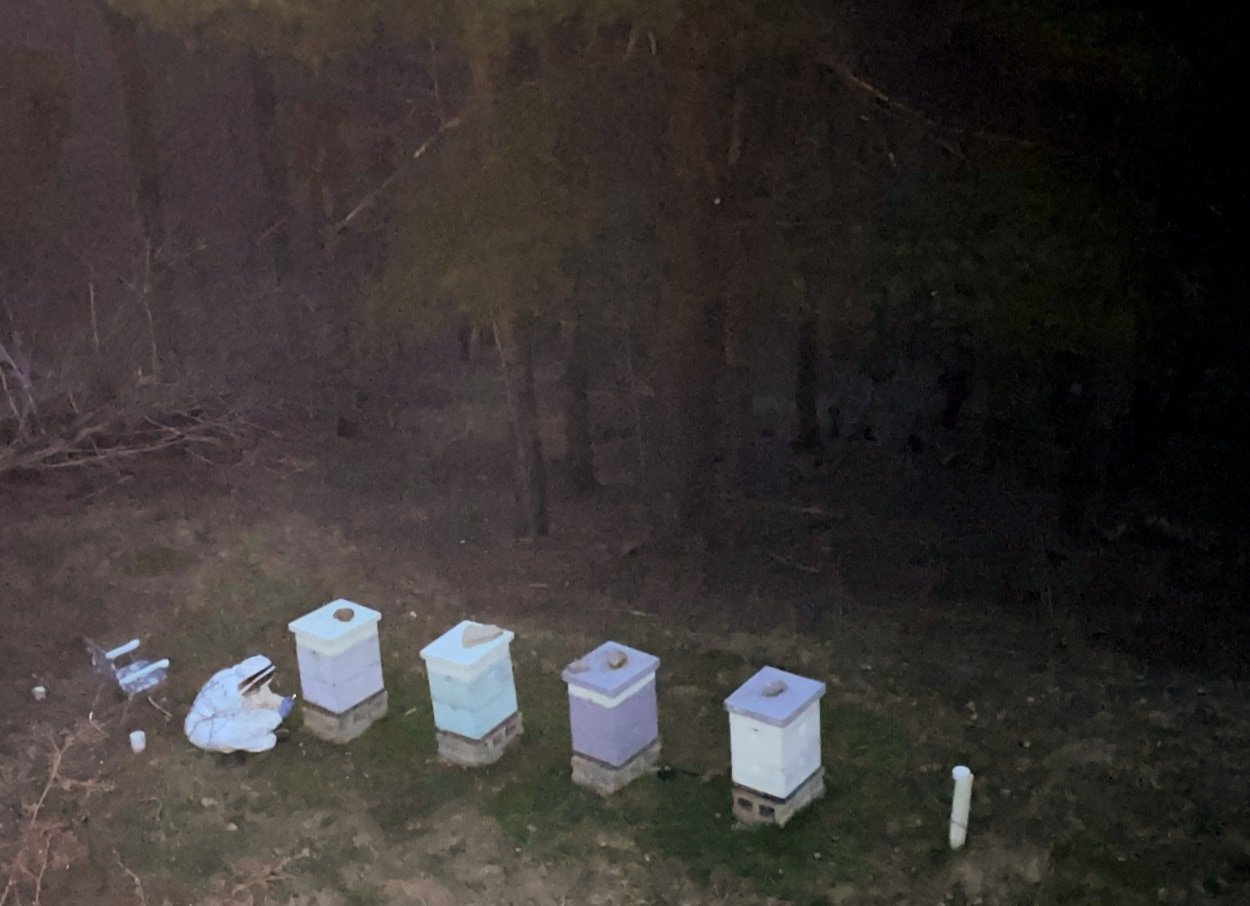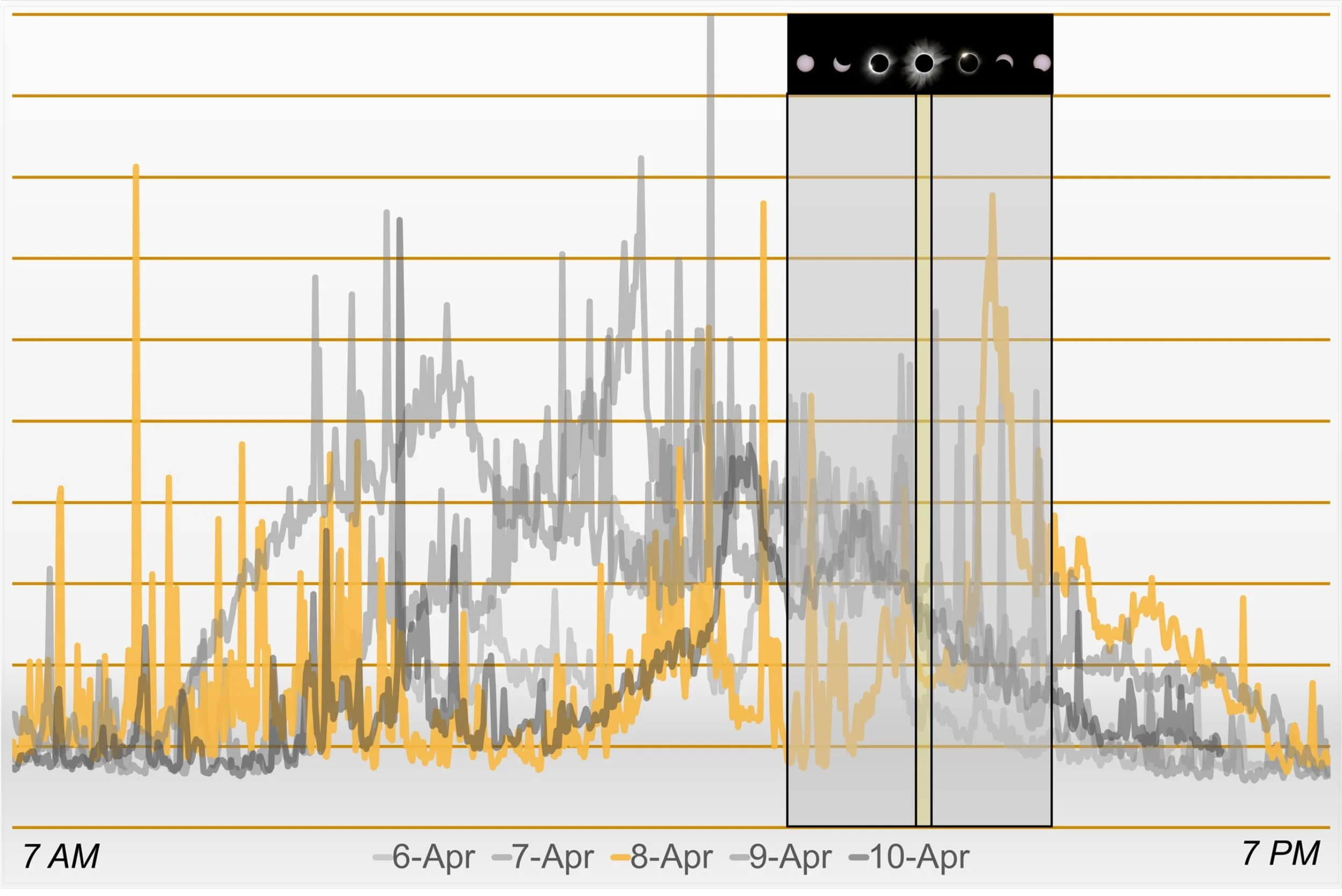
Citizen Science
Citizen science turns everyday science enthusiasts into real-world researchers.
Citizen Science:
A collaborative approach
Citizen science invites the public to dive into scientific adventures, from environmental monitoring to galaxy mapping. By providing tools and guidance, these projects make science accessible and engaging, allowing volunteers to contribute to data collection and analysis. This method not only speeds up research but also deepens public understanding and connection to science, making it a fun and valuable way to democratize knowledge creation.
2024 Total Eclipse of the Sun Soundscapes Project
As a beekeeper in the Western New York area, I got excited when I learned last year that our area would be in the Path of Totality for the 2024 Total Eclipse of the Sun in April. This rare event happens in one’s geography maybe once in a lifetime if that—so I had to see how my honeybees would respond to the total darkness that occurs in mid-day during a total eclipse.
I learned that NASA was recruiting citizen scientists to conduct experiments in their ecosystems for the eclipse and wanted to participate. Here’s some info on the experiment.
NASA, through the Eclipse Soundscapes Project, is interested in understanding how wildlife responds to eclipses. We captured continuous audio for 5 days—2 before and after, as well as day of the eclipse. That way we can capture differences in sounds during the period of totality on eclipse and non-eclipse days and compare. I submitted 35+ GB of data to Eclipse Soundscapes, and this data will be available on GitHub for the roughly 350 people who contributed audio. This was one of the largest concurrent audio experiments in history.
While we wait for NASA to compile results, my brilliant son-in-law Andrew Loeb (for my birthday gift no less!) visualized the data and here are preliminary results. Each day bee activity is represented by a horizontal line from 7:00 am - 7:00 pm. The honey-colored line is the day of the eclipse; the gray box is the actual eclipse and the yellow stripe is the brief period of totality. The vertical axis represents "buzzing" noise. On the day of the eclipse, the bees got quieter as it got darker, especially during the total darkness of totality. After totality, activity picked up as the eclipse led to a backlog of bees left out foraging and unable to return until more sunlight was available. This data has been sent to NASA and will be used for research for years to come.
Thrilled that my love for bees, citizen science and data came together to help advance research. A huge shout-out to Andrew Loeb, my exceedingly capable and patient ally.
TEDxBuffalo: Becoming a Citizen Data Scientist
I spoke at TEDxBuffalo about why using big data to solve problems isn't a job for researchers and academics—it's for anyone who wants to help. Watch my TEDx talk to discover how we can all contribute to a better world by becoming Citizen Data Scientists.
Top Ten Citizen Science Sites
Ready to dive into the exciting world of citizen science? Here's a curated list of top websites that make science accessible, engaging, and downright fun! Each site offers a unique portal into the world of research, where you can contribute to meaningful scientific inquiries from anywhere in the world. Whether you’re a nature lover, star gazer, or tech enthusiast, there’s a project waiting for your participation!
-
SciStarter
A treasure trove of research projects! Whether it's bird watching or stargazing, find your perfect match for scientific adventure!
-
Zooniverse
Become part of global discoveries with your smartphone! From classifying distant galaxies to tracking wildlife, every click helps.
-
CitizenScience.gov
The ultimate hub for citizen science enthusiasts! This platform connects you with a myriad of government-supported projects that need your help.
-
NASA
Reach for the stars or maybe just study them from your backyard. NASA's projects let you contribute to real space science with tools you already own.
-
Nat Geo
Explore the natural world with National Geographic! Track plant life cycles, monitor coral reefs, or measure the brightness of your night sky.
-
NOAA
From collecting climate data to safeguarding our oceans, NOAA offers you a chance to tackle environmental challenges firsthand.
-
ESA
Help the European Space Agency track asteroids or grow plants for space missions. Your contribution could be out of this world!
-
EU Citizen Science
Engage with projects like FRANCIS, where you can innovate for a sustainable future. It’s all about making a difference with every small step.
-
Project BudBurst
Keep an eye on the environment by observing and recording plant changes throughout the seasons with National Geographic.
-
Globe at Night
Join an international effort to map light pollution. By observing the stars, you can help scientists light up our understanding of the night sky.

